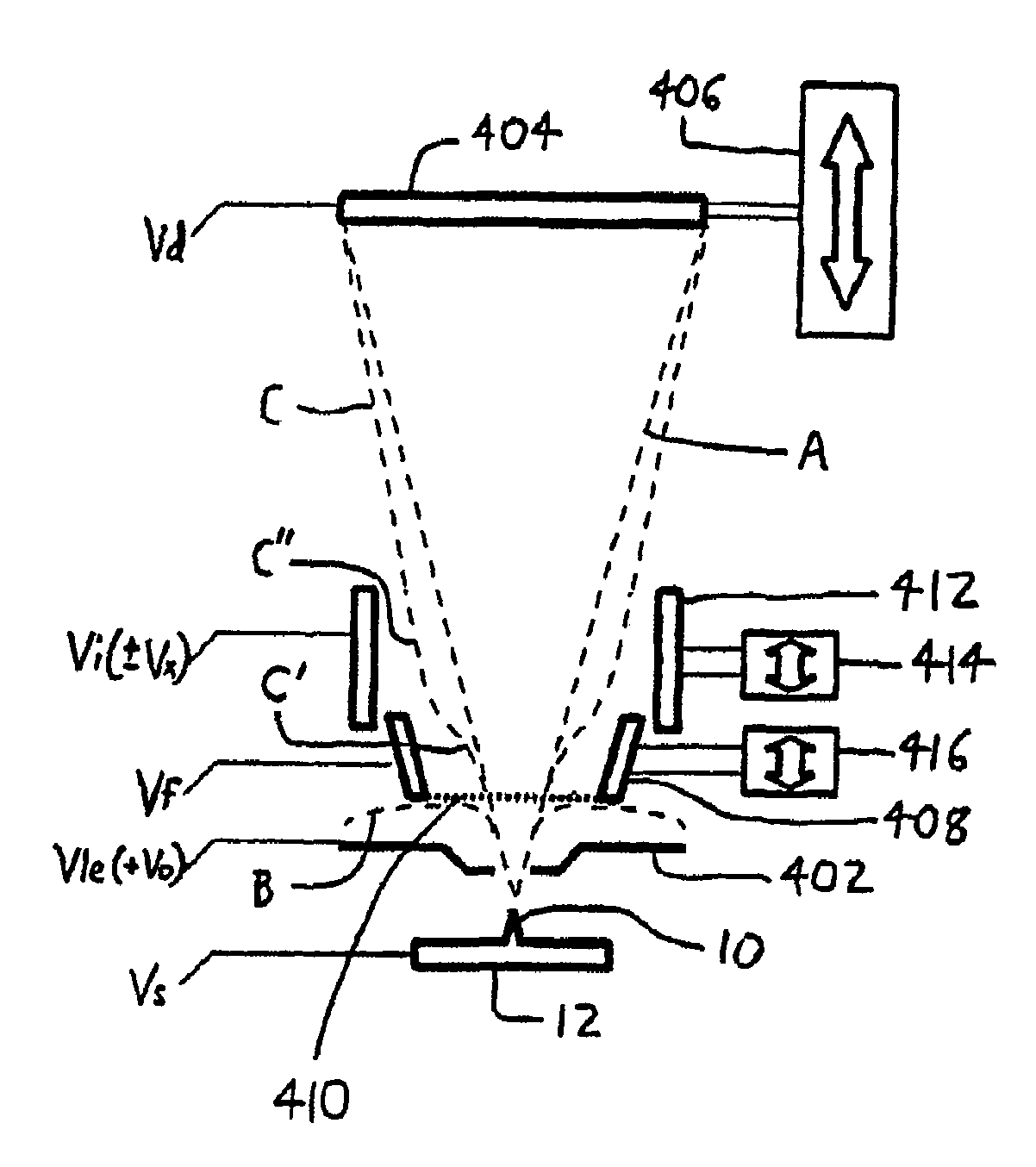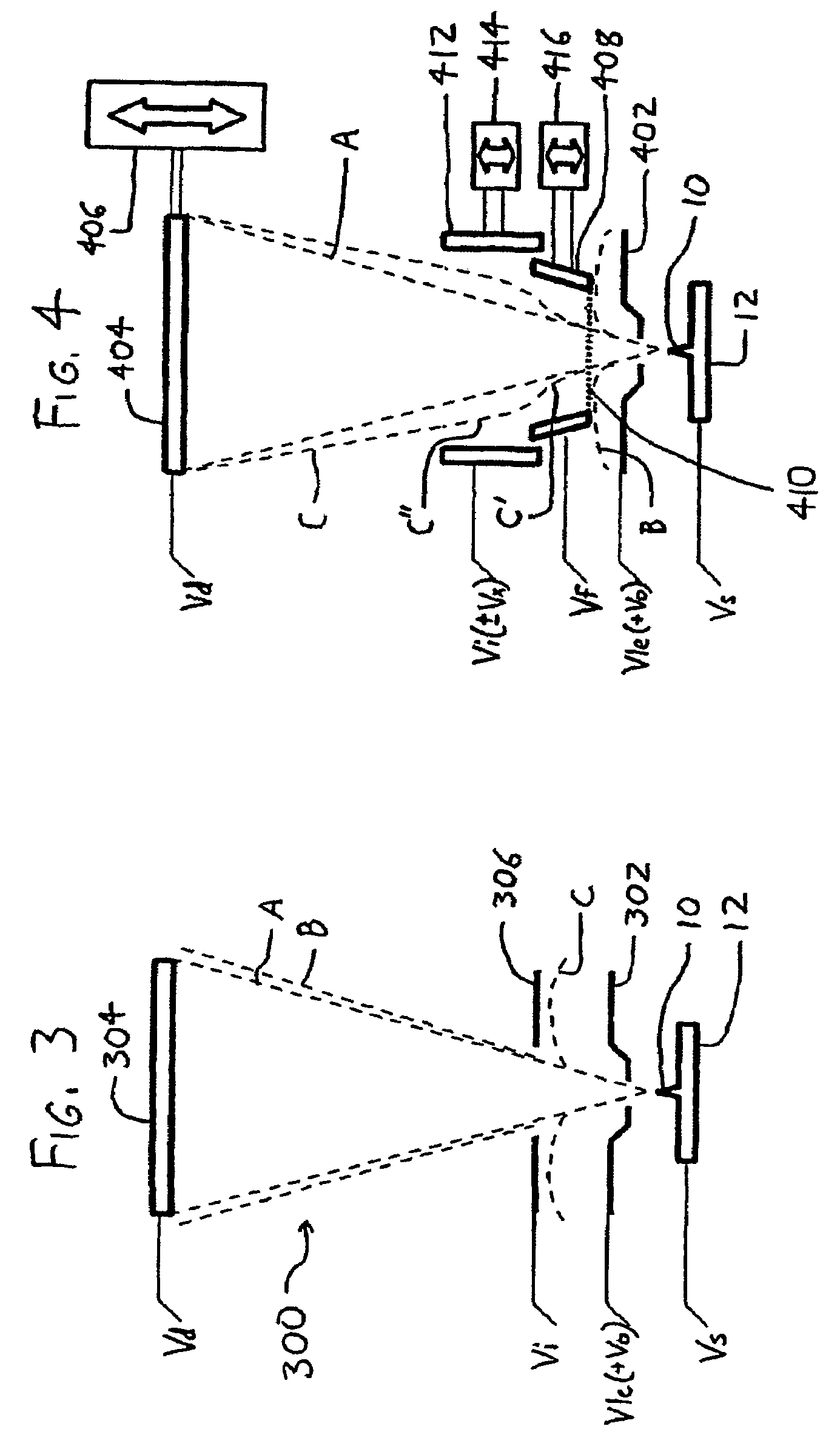High resolution atom probe
a technology of atom probes and atom probes, applied in the field of atom probe microscopy, can solve the problems of limited ability to accurately identify ions, uncertainty or errors in compositional analysis provided, and limit the ability of atom probes to distinguish between ions of nearly similar masses, so as to effectively serve as a single electrode, the effect of assisting image data quality
- Summary
- Abstract
- Description
- Claims
- Application Information
AI Technical Summary
Benefits of technology
Problems solved by technology
Method used
Image
Examples
Embodiment Construction
[0022]Referring to FIG. 2, an atom probe exemplifying certain preferred features of the invention is designated generally by the reference numeral 200. A specimen 10 is situated on a specimen mount 12, which is charged to a datum potential Vs. A detector 202 is spaced from the specimen 10, and as in prior arrangements, an attractive potential gradient is maintained between the specimen 10, a local electrode 204, and the detector 202: surface atoms on the specimen 10 are ionized by the electric field at the specimen surface as a result of the momentarily applied potential (equal to Vs−(Vle+Vo)), and accelerated towards the local electrode 204 and the detector 202.
[0023]The detector 202 is situated on a positioning stage 204 which allows the detector 202 to be repositioned at least along the axis of the flight cone A wherein evaporated ions travel from the specimen 10 when overvoltage pulses Vo are applied to the local electrode 204. Such a positioning stage 204 may take the form of v...
PUM
| Property | Measurement | Unit |
|---|---|---|
| positive voltage | aaaaa | aaaaa |
| positive voltage | aaaaa | aaaaa |
| diameter | aaaaa | aaaaa |
Abstract
Description
Claims
Application Information
 Login to View More
Login to View More - R&D
- Intellectual Property
- Life Sciences
- Materials
- Tech Scout
- Unparalleled Data Quality
- Higher Quality Content
- 60% Fewer Hallucinations
Browse by: Latest US Patents, China's latest patents, Technical Efficacy Thesaurus, Application Domain, Technology Topic, Popular Technical Reports.
© 2025 PatSnap. All rights reserved.Legal|Privacy policy|Modern Slavery Act Transparency Statement|Sitemap|About US| Contact US: help@patsnap.com



